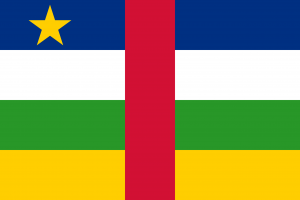Language/Sango/Vocabulary/Count-to-10
Hi Sango learners! 😊
In this lesson, we will learn how to count to 10 in Sango. Numbers are an essential part of any language, and it's something you'll need to learn and use every day. By the end of this lesson, you'll be able to count confidently up to 10 in Sango.
Introduction[edit | edit source]
Before we start with the lesson, let me share some interesting facts about Sango. Sango, also known as Sangho, is a creole language spoken by over 4 million people, primarily in the Central African Republic and Chad. It is also an official language of the Central African Republic, along with French. Sango is a unique language, as it is the only African creole that is not based on a European language. Instead, it is based on the Ngbandi language, with influences from French, Arabic, and other languages.
Learning to count in Sango is relatively simple, even for beginner learners. Sango is a phonetic language, meaning that each letter is pronounced consistently, with very few exceptions. This means that once you learn how to pronounce the letters, you should have no trouble pronouncing any word in Sango, including numbers.
Let's get started with learning to count in Sango!
Consider broadening your understanding by checking out these related lessons: Animals, Clothes & Hobbies.
Sango Numbers 1-10[edit | edit source]
Numbers in Sango have their own unique words, which are straightforward to learn. Let's start with the numbers 1-5.
| Sango | Pronunciation | English |
|---|---|---|
| tî | tee | one |
| mbí | m-bee | two |
| tátû | ta-too | three |
| nné | n-nay | four |
| tanó | ta-no | five |
Now, let's take a look at the remaining Sango numbers 6-10.
| Sango | Pronunciation | English |
|---|---|---|
| tárâmbè | ta-ram-beh | six |
| tárâmbè na mbí | ta-ram-beh na m-bee | seven |
| tárâmbè na tátû | ta-ram-beh na ta-too | eight |
| tárâmbè na nné | ta-ram-beh na n-nay | nine |
| tárâmbè na tanó | ta-ram-beh na ta-no | ten |
As you see, the word for six in Sango is "tárâmbè," which is an interesting word with a story behind it. According to tradition, soldiers in the Central African Republic, who spoke Sango, counted "one, two, three, four, five, I am alive" during war. The word "tárâmbè" originated from the phrase to mean "I am alive," and thus became the number six in Sango.
To practice your Sango numbers, here's a dialogue between two friends:
- Person 1: Tî! (One!)
- Person 2: Mbí! (Two!)
- Person 1: Tátû! (Three!)
- Person 2: Nné! (Four!)
- Person 1: Tanó! (Five!)
- Person 2: Tárâmbè! (Six!)
- Person 1: Tárâmbè na mbí! (Seven!)
- Person 2: Tárâmbè na tátû! (Eight!)
- Person 1: Tárâmbè na nné! (Nine!)
- Person 2: Tárâmbè na tanó! (Ten!)
Now that you have learned to count to 10 in Sango, try practicing with a friend, or find native speakers of Sango on Polyglot Club to practice with. Remember, practice makes perfect.
Conclusion[edit | edit source]
In this lesson, we explored the Sango vocabulary for counting numbers from 1-10. We used tables and dialogue to help you learn and visualize the words better. By now, you should have a good understanding of numbers in Sango.
To improve your Sango vocabulary, you can use the Polyglot Club website. Find native speakers and ask them any questions!
Keep practicing and learning, and you'll be speaking Sango fluently in no time! 😊
➡ If you have any questions, please ask them in the comments section below.
➡ Feel free to edit this wiki page if you think it can be improved. 😎
Sources[edit | edit source]
Having concluded this lesson, consider checking out these related pages: Health & Vegetables.
Other Lessons[edit | edit source]
- Time
- How to Say Hello and Greetings
- Animals
- Toys
- Hobbies
- Feelings and Emotions
- Sports
- Computer
- Family

